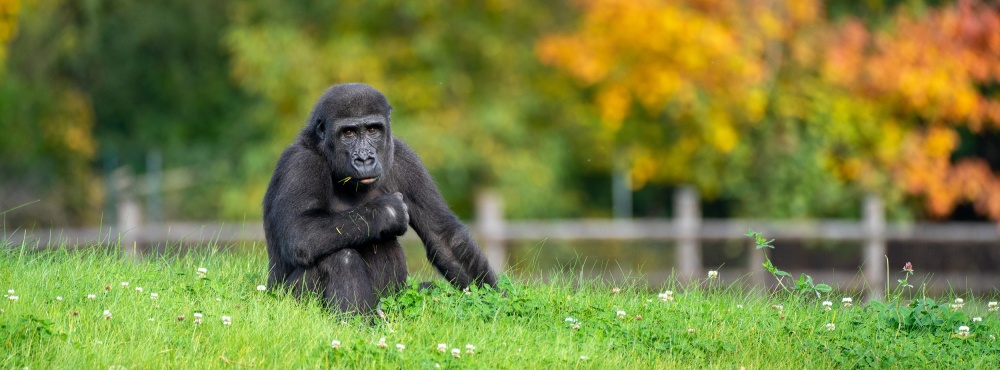Giraffes, foxes and humans

The killing of the young male giraffe, Marius, in Copenhagen zoo provoked a wave of emotion, but it also highlighted the difficulties of keeping of wild animals in captivity and the fundamental differences in the perception of what is right and what is natural.

I asked myself two questions in particular in connection with the “Copenhagen Case”. Was it really not possible to locate Marius to another zoo? And was it necessary to carve him up in the presence of the public, as well as live on the internet?
For me, the answer to the second question is clear. No. Despite the fact that many taboos relating to the depiction of violence, sex and death fell away long ago, I'm convinced that if it was necessary to kill Marius, everything - including the autopsy and the carving up – should have been done with a certain amount of dignity and not in the presence of the public and cameras. This view is strongly echoed in many other countries, although I'm not sure how numerous its supporters in Denmark itself are. Public dissections of animals there are part of the educational curriculum of zoos and it’s nothing strange to the Danes, who frequently live or grew up on farms. The problem is that the public autopsy of the baby giraffe from Copenhagen has now been shown to virtually the entire world.
The flip side of that coin is that even though we are willing to accept unbelievable violence even in children's films (Kevin in Home Alone 2, for example, would in reality have killed his adversaries twenty times over), depicting simple, undistorted events often triggers excessive emotions. We were also convinced of this fact during the live broadcast from the gorilla pavilion time after time by the completely harmless skirmishes within the gorilla family... For people who live lives detached from nature, perception of what is or is not natural is unfortunately often highly distorted. I recently read a report in amazement about how a certain lady called the city police about a fox that was trying to catch a hare. The fox, however, just like a lion, cannot survive on soy tofu - which brings us back to the first question.
Whether it was or was not possible to place Marius in another zoo, I don’t know. We have always managed so far to cope with male giraffes through collaboration across Europe, albeit at the price of sharing the cost of transport with the recipient. Behind this unanswered question, however, is another, much more important one. What should be done with surplus animals in zoos or how can these excess animals be prevented from being born at all?
Only a small fraction of young survive in nature, but it’s different in captivity; there, their survival is conversely very high. For my grandmother the solution to this problem was simple. From a litter of kittens, chose one or two and drown the others. Zoos, however, naturally try to avoid a similar approach. The simplest is to give surplus individuals to other breeding facilities. However, there are only a certain number of these and their capacity is not unlimited. Moreover, in polygynous species, where there are more males to females (just as with giraffes), everything is made exponential by a large surplus of single males. And that is not entirely resolved by the creation of male groups.
The approach therefore is to slow down or completely halt animal reproduction in various ways, either by separating the males, deploying contraception or by other methods. Reproduction is but a natural part of the life cycle of animals and disrupting this cycle is not right - and in many cases it’s not even possible. For example, female cats who are deprived of the opportunity to have young, repeatedly come into turbulent heat that soon completely destroys the reproductive organs.
Controlled breeding of animals in captivity therefore represents a conundrum to which is added the complicating factor that - although it may sound like a contradiction - the number of animals of individual species that are available within different breeding facilities, it is usually relatively low, and that it’s necessary to take into consideration their blood relations. Locating the son of a male somewhere who already has offspring in half of Europe, can become a task as similarly difficult to unravelling the Gordian knot ...
We therefore have to evaluate the killing of the baby giraffe in Copenhagen after a necessary interval and from a number of perspectives. What is certain is that the culling of healthy animals is an extreme solution that will always arouse emotions, and depending on the approach taken to it. At the same time, however, it’s important to realize that natural laws are inexorable, and that death - even the death of young – is a part of this in just the same way as a fox tries to catch a hare.
Miroslav Bobek, Director of Prague Zoo
ZOOPRAHA.CZ
Contacts
- The Prague zoological garden
U Trojskeho zamku 120/3
171 00 Praha 7
Phone.: (+420) 296 112 230 (public relations department)
e-mail: zoopraha@zoopraha.cz
Others








